Trucking accident cases are often more complicated than standard car crash cases, especially if the truck driver was an employee (and therefore implicates their employer via vicarious liability). The stakes tend to be higher, the injuries more severe, and the legal dispute more aggressive. For personal injury attorneys, understanding the common defenses in trucking accident cases (used by trucking companies and their insurers) is essential.
A truck accident lawsuit typically involves defendants such as truck drivers, trucking companies, or insurance providers, who may use a variety of legal defenses to challenge liability and avoid paying compensation.
Trucking companies and insurers often rely on strategic defenses to avoid liability. As a plaintiff’s attorney, knowing these defenses can help you anticipate opposing arguments and respond effectively. Understanding your client’s legal right to recover damages is crucial, as these cases often involve significant amounts of money and complex legal issues. Multiple parties may be involved in a truck accident lawsuit, making it essential for your legal team to identify all responsible parties and build a strong case. From disputing negligence to blaming third parties, these tactics require careful investigation, strong evidence, and clear legal theory. By staying proactive and focused on the facts, attorneys can reduce the risk of case derailment and improve their clients’ chances of success with the support of a skilled legal team.
Keep reading for an introduction to some of the defenses in trucking accident cases that you’re likely to encounter, and for some basics on how to stay ahead of the defense.
Comparative Fault: The Blame Game
One of the most frequent defenses raised in trucking accident cases is comparative fault. The defendant may argue that the plaintiff was at least partially responsible for the accident. In some states, this can reduce the plaintiff’s compensation, and in others, it may bar recovery entirely if fault reaches a certain threshold. However, even if the plaintiff is found partially at fault, they may still be able to recover a portion of their damages depending on state law.
To overcome this, attorneys should begin building a narrative from day one that highlights the truck driver’s errors or misconduct. This includes collecting evidence such as:
- Dashcam or surveillance footage
- Black box data from the commercial vehicle
- Eyewitness testimony
- Police reports
By showing that the truck driver violated traffic laws, failed to follow safety regulations, or acted with carelessness, you can shift the focus away from the plaintiff’s conduct and back to the defendant’s responsibility.
Sudden Emergency Doctrine
Defense teams may assert that the truck driver faced a sudden, unexpected emergency and acted as any reasonable driver would have under the circumstances. They may argue that the driver was unable to take evasive action due to the unexpected nature of the emergency. This doctrine can limit liability if successfully raised.
To challenge it, you must demonstrate that the “emergency” was either foreseeable or created by the driver’s own negligence. For example, if the truck driver swerved to avoid a collision because they were tailgating, that undermines the emergency defense. Attorneys can point to company safety training, maintenance logs, or prior infractions to prove that the driver’s actions were unreasonable leading up to the incident.
Independent Contractor Defense
Many trucking companies attempt to distance themselves from liability by claiming the driver was an independent contractor, not an employee. These defenses often hinge on how drivers are classified and the degree of control the company has over its drivers. This defense is meant to shield the company from responsibility for the driver’s conduct.
To weaken this defense argument, investigate how much control the company exercised over the driver’s work. Factors such as required uniforms, set routes, performance tracking, and the use of branded vehicles can support a finding of an employer-employee relationship. Contracts and internal policies may reveal that the trucking company maintained a level of supervision that makes it vicariously liable.
Mechanical Failure or Third-Party Blame
Another common tactic is to shift responsibility to a third party, such as a maintenance company, parts manufacturer, or vehicle loader. In truck accident cases, the involvement of multiple parties can make it challenging to determine who is primarily responsible for the incident. This can introduce multiple layers of complexity into the litigation.
While it may be necessary (and useful in cases where insurance coverage is insufficient) to bring third parties into the case, attorneys should avoid letting defense counsel turn it into a blame-passing exercise. Defense counsel may attempt to shift blame among the parties involved, making it essential to thoroughly investigate each party’s role. This means preserving the vehicle for expert inspection and collecting maintenance records quickly.
With the help of accident reconstruction experts and mechanical engineers, you can show whether the failure was foreseeable and who had a duty to prevent it. If the trucking company ignored warning signs or failed to follow inspection schedules, this can establish negligence regardless of the third party’s involvement.
No Causation
Trucking companies may admit that an accident occurred but deny that their driver’s conduct caused the injuries. This is particularly common when the plaintiff has pre-existing conditions or delayed treatment.
To push back, attorneys need to work closely with medical experts. These professionals can draw a direct connection between the accident and the plaintiff’s injuries sustained. Medical records play a crucial role in establishing this link, as they document the nature and extent of the injuries and help address any arguments about pre-existing conditions. Medical imaging, treatment timelines, and testimony about the severity of injuries before and after the crash can clarify causation. The plaintiff’s pain and suffering are often contested by the defense, making it essential that these damages are proved by expert testimony. Thorough documentation of injuries sustained, including pain and suffering, can help ensure that the full extent of damages is recognized. The goal is to show that the accident aggravated any prior conditions or led to entirely new injuries.
Lack of Notice or Foreseeability
In cases involving poorly maintained roads or shifting cargo, the defense may claim they had no way of knowing a hazard existed. They argue they could not have prevented the accident because they lacked notice. Determining who should bear responsibility for the hazard—whether it is the driver, trucking company, manufacturer, or even a government agency—is a key issue in these cases.
To defeat this defense, attorneys should investigate whether the hazard had occurred before or was the result of a systemic issue. For example, if the company had received citations in the past for cargo loading violations or if other crashes had taken place on the same route, foreseeability becomes harder to deny. Internal emails, inspection logs, and driver complaints can be valuable evidence that notice existed well before the incident.
Plaintiff’s Delay in Treatment
Insurers often seize on any delay in medical treatment to argue that the plaintiff was not truly injured or that the injury came from another event. They may also claim the plaintiff was not actually hurt or failed to mitigate their damages. This is especially common in soft tissue injury claims.
To counter this, it is important to explain the context of the delay. Maybe the plaintiff lacked insurance, feared the cost, or did not initially realize the severity of the injury. In many cases, a delay does not mean the injury is invalid. The plaintiff’s ability to seek timely treatment can impact the strength of their claim. Medical experts and mental health professionals can testify about the reasons for delayed treatment and confirm the connection between the crash and the injuries.
Consent or Assumption of Risk
This defense is rarely successful in trucking accident cases, but some defense teams attempt it when the plaintiff was a passenger in the truck or had knowledge of the risks. They may claim that the plaintiff “knew what they were getting into.” Assumption of risk is a common argument raised by defendants in a personal injury lawsuit following a truck accident.
Attorneys should be prepared to argue that the plaintiff had no control over the vehicle and no power to prevent the accident. Assumption of risk does not apply simply because someone rode in a commercial truck. Unless the plaintiff knowingly accepted a specific and immediate risk, the defense usually does not hold up.
Spoliation of Evidence
If the plaintiff’s team fails to preserve critical evidence, such as a damaged vehicle, phone records, or inspection logs, the defense or insurer may argue that this lack of evidence prejudices their case. Additionally, an insurer may use the plaintiff’s own words or a recorded statement to challenge the validity of the claim if evidence is missing. They may request that certain evidence be excluded or even ask for the case to be dismissed.
To avoid this, attorneys must send preservation letters early and follow up on discovery promptly. In trucking cases, time is of the essence. Black box data and maintenance records can be erased or lost quickly. It is also important to be cautious when providing recorded statements to insurers, as these can be used against the plaintiff in court. Proving that you acted in good faith and made reasonable efforts to preserve key evidence can protect against claims of spoliation.
Contact Walker Advertising for Help Growing Your Firm’s Client Base
Whether you’re a solo lawyer, or a small firm lawyer — or are part of a larger firm with plans for further expansion — it’s important to grow your client base in order to hit your revenue and client growth goals. Here at Walker Advertising, we can help. We operate a number of popular attorney networks (including our Los Defensores and 1-800-THE-LAW2 brands) through which firms are able to access leads for various legal claims.
The leads we acquire through our various online marketing efforts — from social media marketing to targeted web ads — have been pre-qualified by our team so that you aren’t hassled by a flood of leads that are simply not relevant or actionable for your purposes. By accessing these quality leads, you’ll be well-equipped to select the best ones to grow your firm business.
Best of all, you won’t have to spend your valuable time and effort on building out your online marketing efforts. Don’t worry about SEO optimization, trend analysis, or any other complex marketing issues. Instead, use us to access pre-qualified inbound leads, and focus your limited internal resources on providing quality representation to your existing (and new) client base.
Contact Walker Advertising today to connect to a member of our team who can explain how our legal networks can help your firm business thrive in this ever-changing digital marketing landscape.
We look forward to assisting you.






